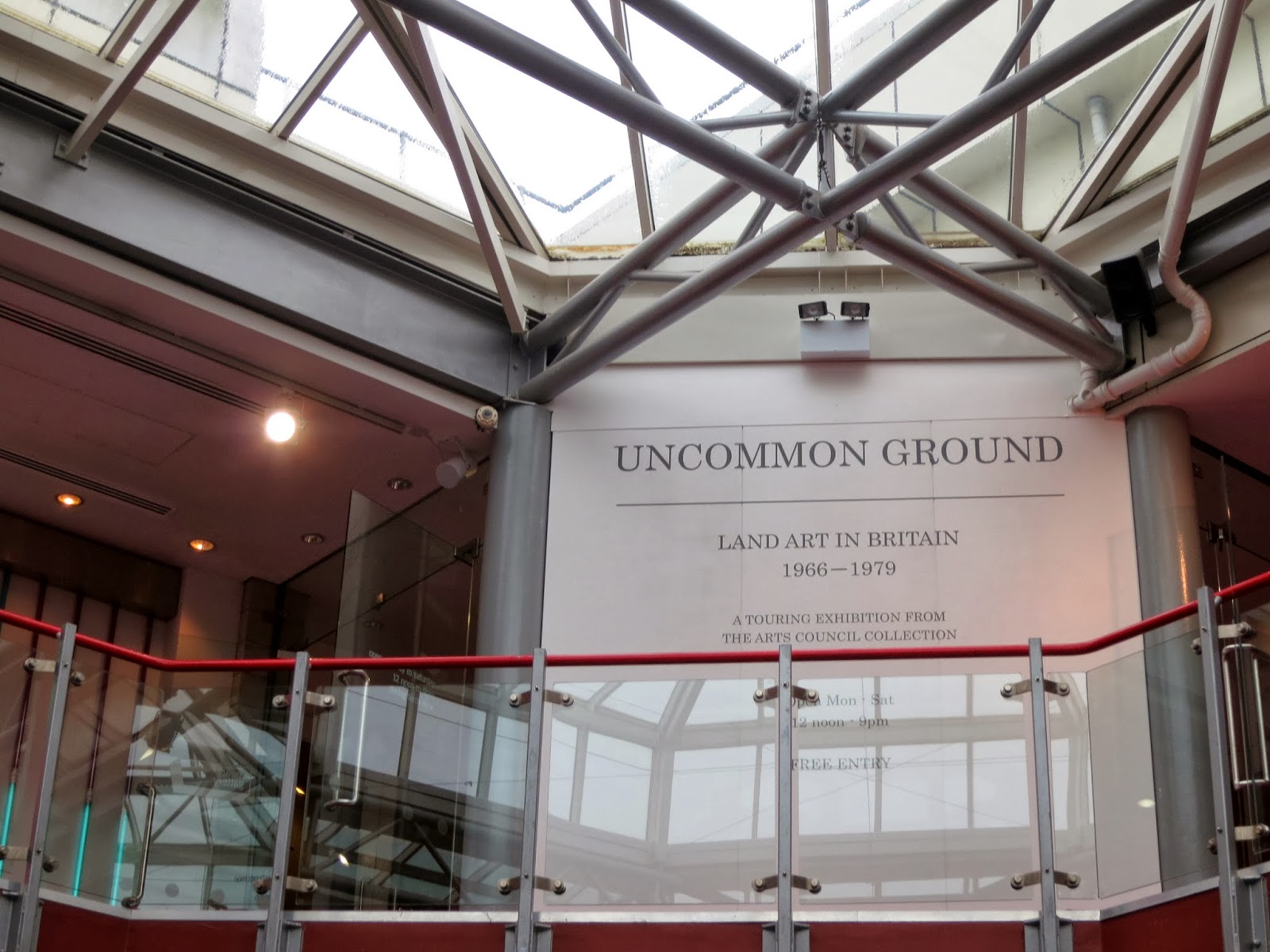Uncommon Ground: Land Art in Britain, 1966-1979
at the Mead Gallery, Warwick Arts Centre.
An exhibition featuring the works of 24 artists revealing the distinct forms that Land Art took in Britain. According to the curators it was 'predominantly conceptual and ephemeral, hand-made and organic. The key strategies developed in the UK included the photographic documentation of actions, the positioning of walking and travelling as creative acts combined with an exploration of locality, and a keen awareness of rural traditions and contexts. Uncommon Ground demonstrates how the term Landscape was questioned and transformed by artists, provoking a renewed interest in older forms of landscape art, and in historic landscapes. From being seen as something old-fashioned and redundant, landscape became the ground for radical artistic experiments'.
David Long, Stone Circle, 1972
Comprising 61 stones, one of his first indoor installations.
Jan Dibbets, Perspective Correction, 1968
Roger Ackling, Night and Day, (1 Hour), 1977
Anthony McCall, Landscape for Fire, 1972
A film based on an event held in August 1972 at North Weald Airfield in Essex. McCall mounted eight such events. He called them 'conditions', suggesting a state of mind or an instruction rather than a performance or theatrical event, and although these events were formally structured they embraced the natural conditions such as gathering darkness and wind and mist. They were deliberately slow, extended and non-spectacular, with no simple point of focus, but are suggestive of ancient rituals such as the lighting of beacons to mark suspicious events.
Anthony McCall, Landscape for Fire: Score for Eternal Condition, 1972
The second gallery space
In foreground: Flat Tree by Anthony Gormley
Back left: Upright Tree by Anthony Gormley
Back right: Silver Birch by David Nash
Between last two: New Stones by Tony Cragg
Anthony Gormley, Flat Tree, 1978
Reminiscent of Richard Long's installations, this is a very early Gormley. Starting with the smallest in the middle, the pieces are arranged on the floor to form a spiral. Gormley is exploring the idea of displacement here, in the way the organised form of the tree is re-arranged in the gallery.
Tony Cragg, New Stones - Newton's Tones, 1978
An installation of plastic objects and fragments collected near his home, showing growing ecological concern at the profusion of plastic detritus discarded in the environment which is a sign of the impact of humanity on the planet.
Looking closer
Andy Goldsworthy, Forked Twigs in water (photograph)
Andy Goldsworthy, Snowball, 1979 (photograph)
Richard Long, A Line Made by Walking, 1967 (photograph)
Long walked up and down along a line, flattening the grass and then took a photograph. Such an ephemeral gesture in a landscape exemplifies his ambition to make 'simple, practical, emotional, quiet and vigorous art'.
David Nash, Silver Birch Tripod, 1975
There were a lot of photographs of ephemeral land art by various artists, including a photograph of a drawing of Twenty two Trees by David Nash. Nash planted 22 ash trees, 'a long term commitment and an act of faith for the future'.

















This is interesting, Eirene. How revolutionary it all seemed then, and how mainstream, perhaps even same-old today. Some lovely pieces nonetheless.
ReplyDeleteAll true, but still enjoyable.
Delete